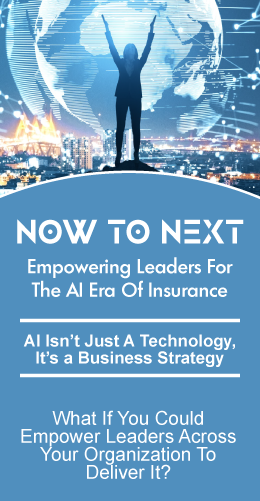The insurance industry is rooted in tradition and has been consistently devoted to its tried and true processes. But with the advent of mobile devices, digital data and an analytics-based approach to working with, serving, and retaining the customer, insurance companies must embrace digitally-enabled distribution strategies or perish.
Digitally transformed insurance products, customer engagement, and processes are impacting everything from auto to life to home to commercial insurance. Personalized bundles are being developed to create streamlined offerings for customers. Leading insurance companies are coming to the understanding that they need to develop next-generation distribution strategies that can effectively sell and support these next-generation products if they are to remain at the forefront of the digital insurance industry.
But it’s not just the fact that the industry is changing, the customer and their expectations are changing as well. These changes are being driven by the customer’s experience they have within closely aligned industries such as banking, as well as, the experience offered by the big tech giants like Amazon, Google, and Apple. These expectations change the customer expectations about everything from where and how they are made aware of their needs and solutions that address them, to how they are onboarded, serviced, and supported as a customer to their expectations about how insurance-related solutions create value for them. Insurers will need to develop distribution strategies and capabilities that can address these needs by identifying new digital touch points in the ecosystems surrounding insureds, improving the flow of information between the customer, distribution partners, and the insurer’s various departments and processes. The ultimate objective is to deliver greater value, be faster in a more personalized manner, and do that far more effectively than current approaches. All of that will need to be executed through touchpoints and processes that span a myriad of digital ecosystems.
What’s Needed to Win: A Customer-First Strategy
Insurers, brokers, and agents that expect to survive and thrive must take the steps to understand the particular needs of both current and target customers and begin to build a strategy around them. Customers are already reliant on digital products and services at this point, and there’s no going back. They expect a fully personalized service meant to provide the easiest experience when inquiring about and applying for new insurance services. Expectations are high to receive the level of service and support they need that fits into their everyday personal and business lives.
And while customers are wanting to handle a lot of options on their own with self-service and tech, they still want the personal touch of an agent ready to help them when they need it. When it comes to more complex issues, customers would much rather speak with a live human who can make things simple for them.
That isn’t so different from what agents and brokers provided in the past. What is different is that in today’s world, the customer rightfully expects the person they reach to know far more about who they are, what their needs are, and where they currently are in their journey as a potential or existing customer when the person responding picks up the phone. They don’t want to repeat information and the last thing they want is for the person they speak with to be less informed about the topic and their situation than they are. The digital products, solutions, and broker and agent platforms that are emerging from the innovation being driven by InsurTechs use next-generation data sources, machine learning, and predictive analytics to provide automated insights and make connections to provide a more user-friendly experience. Within a few clicks and swipes, they enable agents and brokers to give customers completely personalized information based on the data that’s been provided previously.
This type of focus on service can help brokers and agents provide all kinds of new highly contextual support and value to the customer experience and will help them remain relevant in the digital market that is coming. Deploying these kinds of systems will help insurers preserve a critical source of new revenue and partnerships that help them build and retain loyal customers.
Setting Data Free: Supporting Next Generation Business and Distribution Models
Information has traditionally been siloed across the insurance industry. Brokerages, agents, underwriters, and claims management have all siloed this information behind legacy systems and legacy ways of thinking about the business. Companies who expect to survive break those silos apart and begin sharing that information based on its ability to provide greater value and support to the customer. Yes, the customer’s privacy still needs to be protected, but those who want to compete successfully will need to find ways to share the right information on a prospect or customer at the right time in real time. No one in insurance can expect to compete using the old ways of having to search through a number of actual paper files or departments and/or to call others who have to do the same to meet the customer’s needs. Digital sharing and protection of data is becoming a competitive weapon and is more streamlined than ever, reducing errors, and removing tedious manual tasks from day-to-day work.
Technology is changing at a rapid rate and isn’t going to let up anytime soon. This is where cloud-based solutions being introduced by InsurTechs have a huge advantage over legacy systems that are difficult to work with and upgrade. Platforms that are used today must be future-proof, designed to roll out automated updates in the years to come and keep from having issues with servicing customers.
Why the Sense of Urgency? The Future is Already Here
The change taking place in insurance is accelerating. Many of the leading insurers and InsurTechs have completed the work on the basic digital capabilities they need to compete. That means they are ready to undertake and deploy the systems and capabilities that will truly set them apart from their competitors and give them a running start against the big tech players that are circling even closer to the insurance market.
Customers are getting younger in the insurance market, and if they’re not getting younger, they’re still operating with a younger, more modern outlook. The future of insurance consists of lower rates, better service, and personalized counsel to grow off of. Brokers and agents need to have this understanding to meet the growing needs right now before they are left behind. This can be done by looking at how Millennials and Generation Y are operating since they are the ones driving the trend away from traditional models and toward a more digital-friendly landscape.
Customers want their information and digital insurance services supplied to them quickly and in a personalized way. But it’s the human touch that will never go away as customers also want to be able to get in touch with a human being who understands their needs when they want it. To do this, companies in the InsurTech market need to design a data-driven approach to the user experience and engagement models that keep everyone up to date on the modern customer’s needs.
This can be seen in the way people communicate with each other, such as the use of mobile devices, chatbots, and social media. Tech-savvy customers, especially Millennials, are entering their mid-career stage and are working with these technologies more and more in their everyday work tasks. Mobile devices, including phones and tablets, can get employees the information they need while on the go, heading into or out of the office or going from meeting to meeting.
Customers are increasingly putting the importance on the speed of service as well as the ability to tap into self-service options. The insurers and brokers / agents that emerge as leaders will have done the same.
Examples of companies bringing these capabilities to market include Bolt, who is providing a platform that enables insurers to quickly set up and provide new distribution channels, to Digital Fineprint that provides data to support commercial brokers and customers, to Certua, who is finding new ways for life insurance agents to create value for their customers.
Companies are starting to install more Saas (software as a service) technology in driving the new insurance process for customers. And data is playing a huge part in how insurance companies are working with their clients, enabling insurance companies to better understand their needs with a more analytical approach.
Come listen to topics like this and others from innovative industry leaders at InsurTech FUSION Summit on June 18 -19 in San Francisco.
Register Now




















